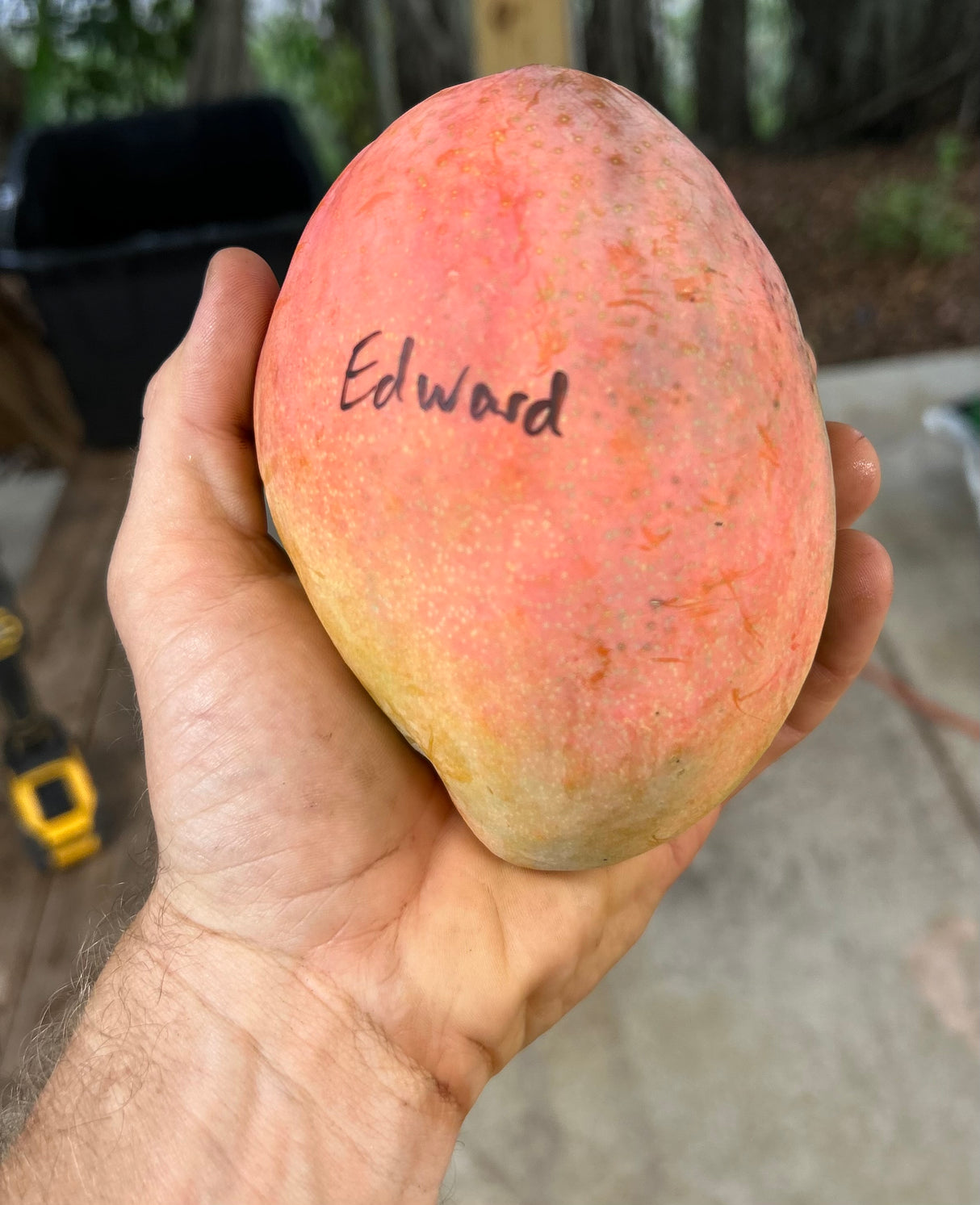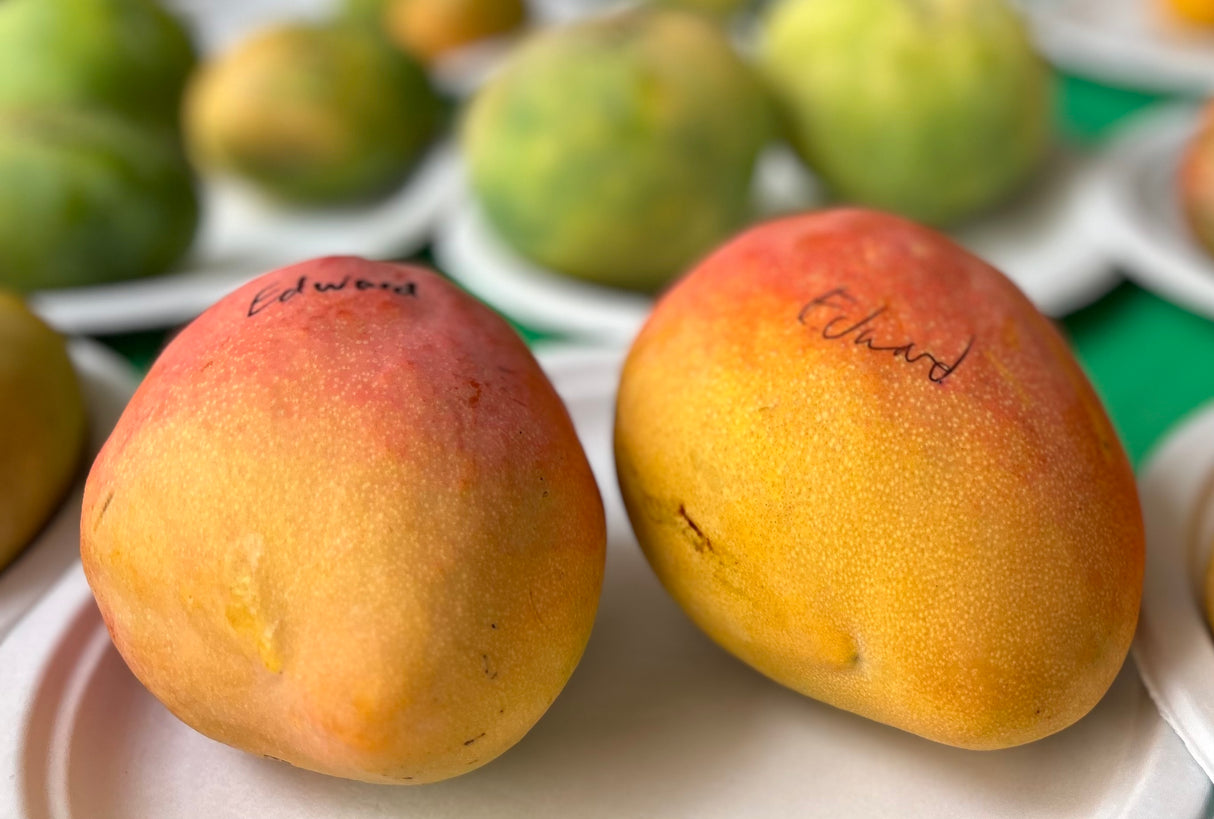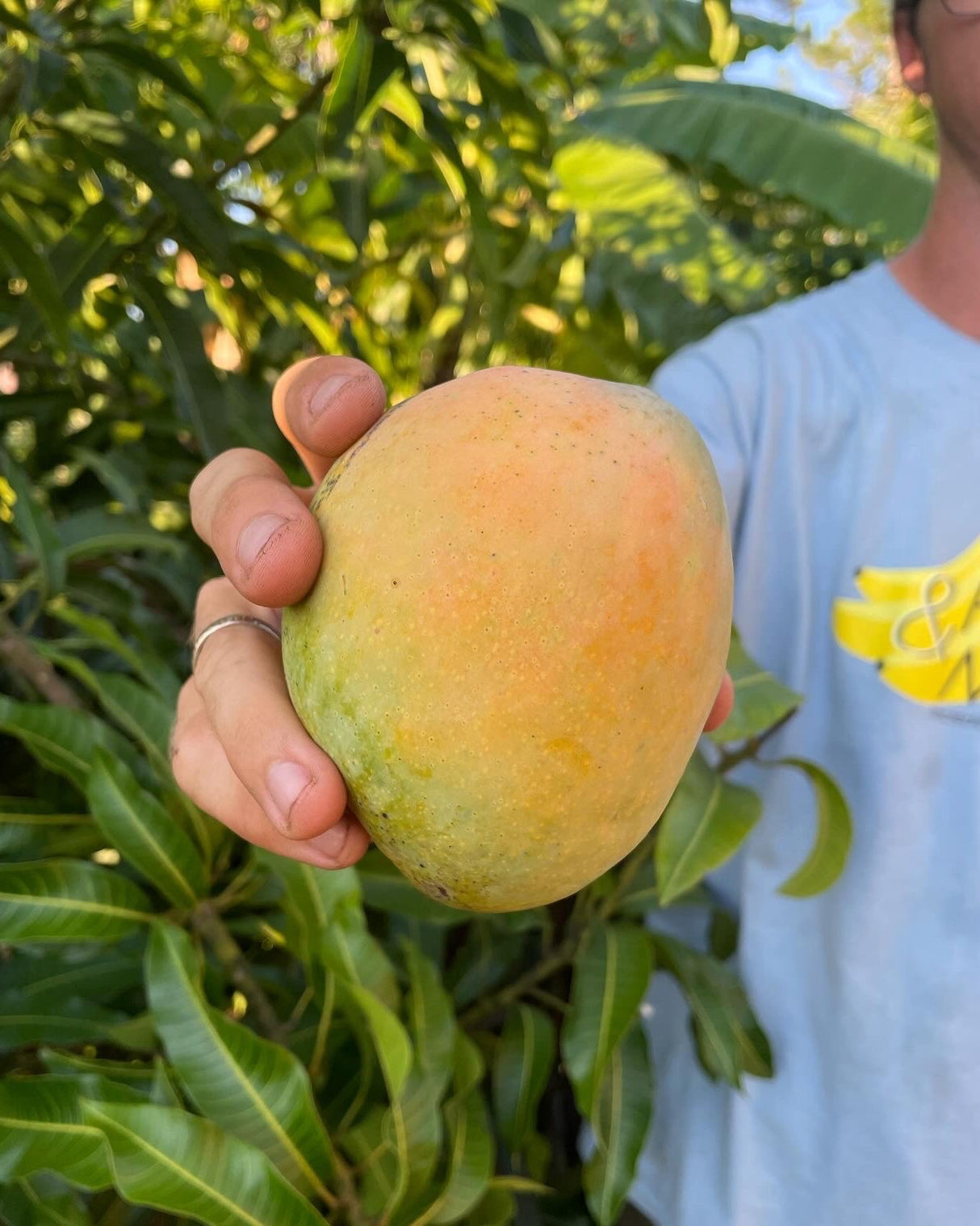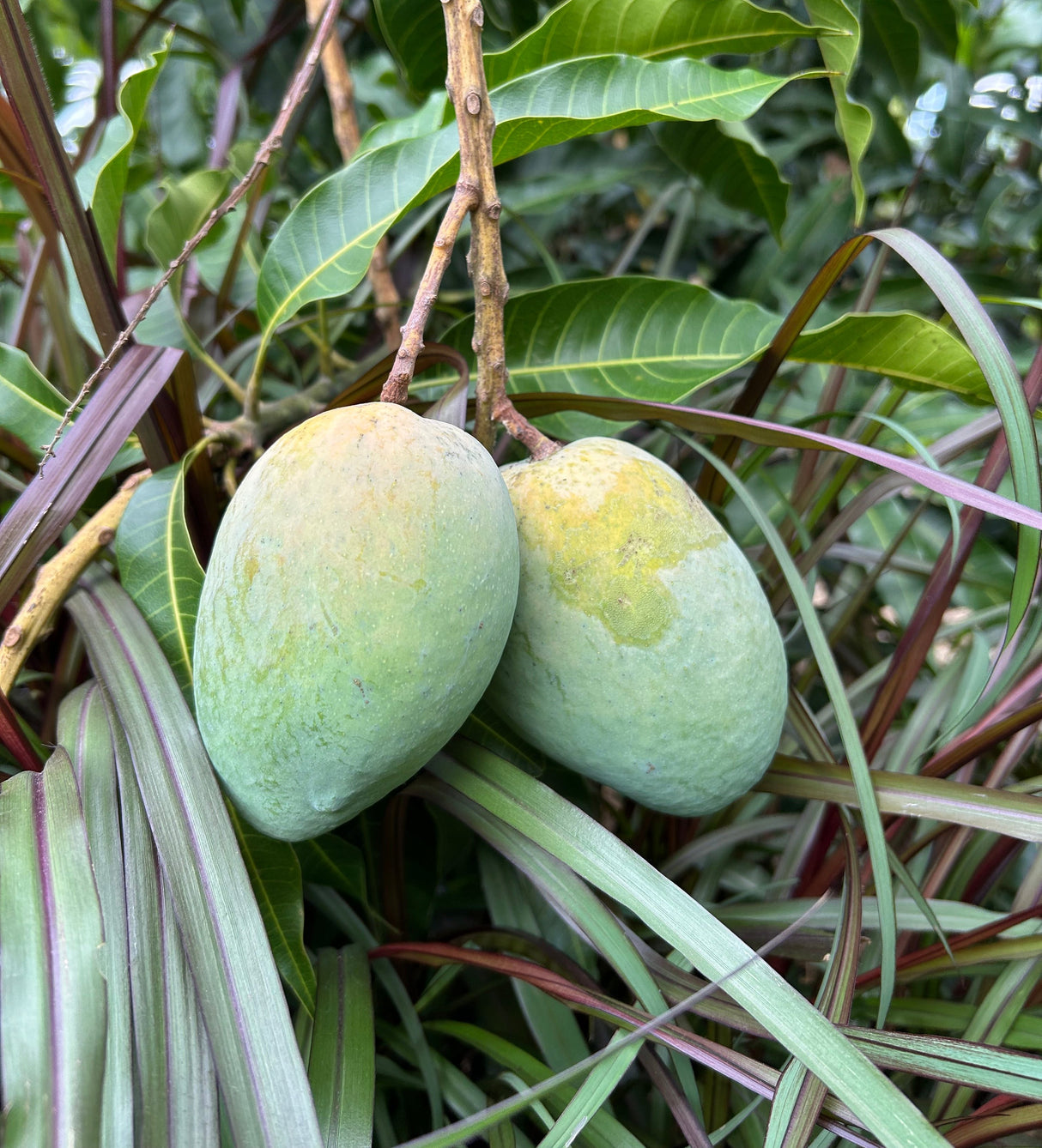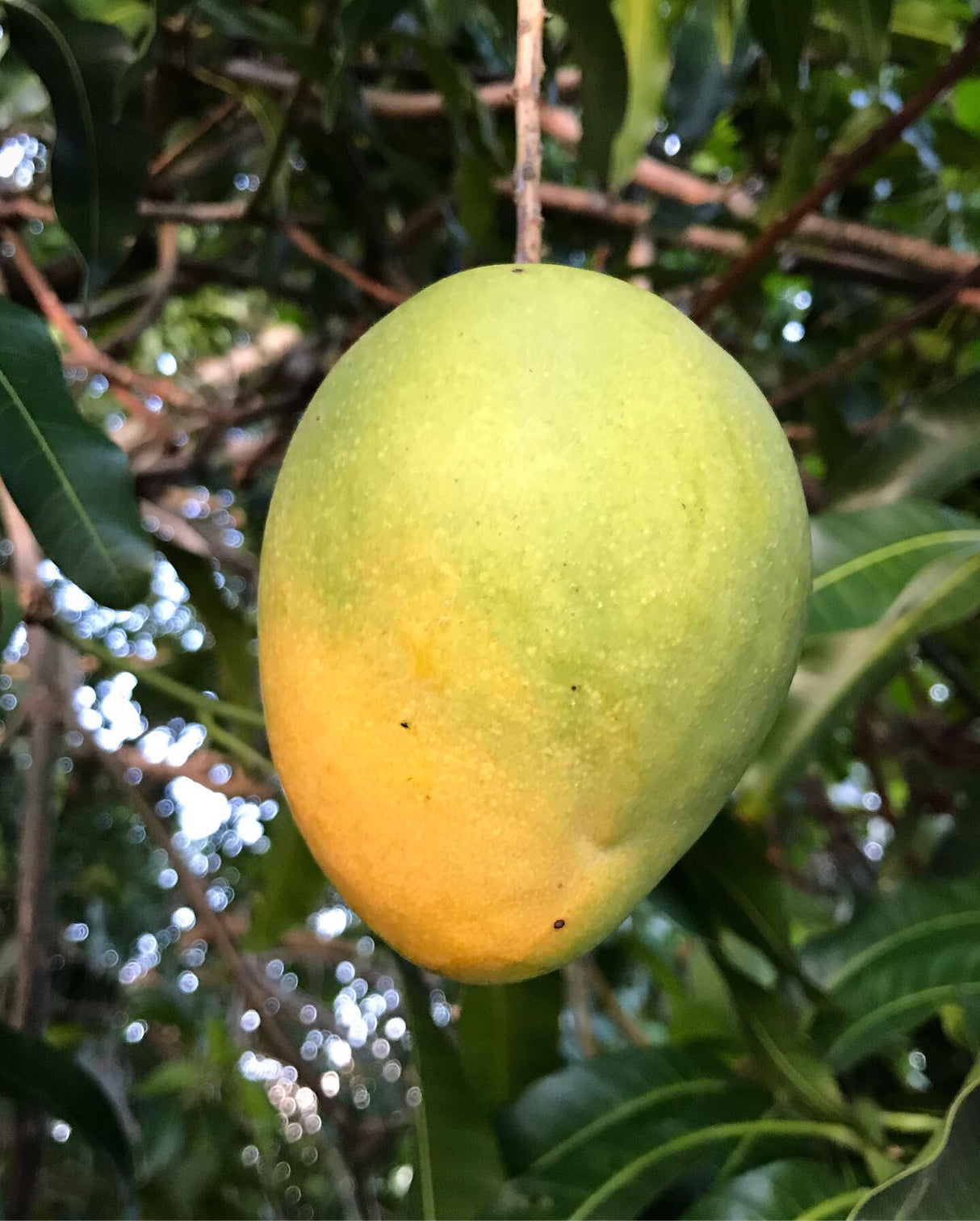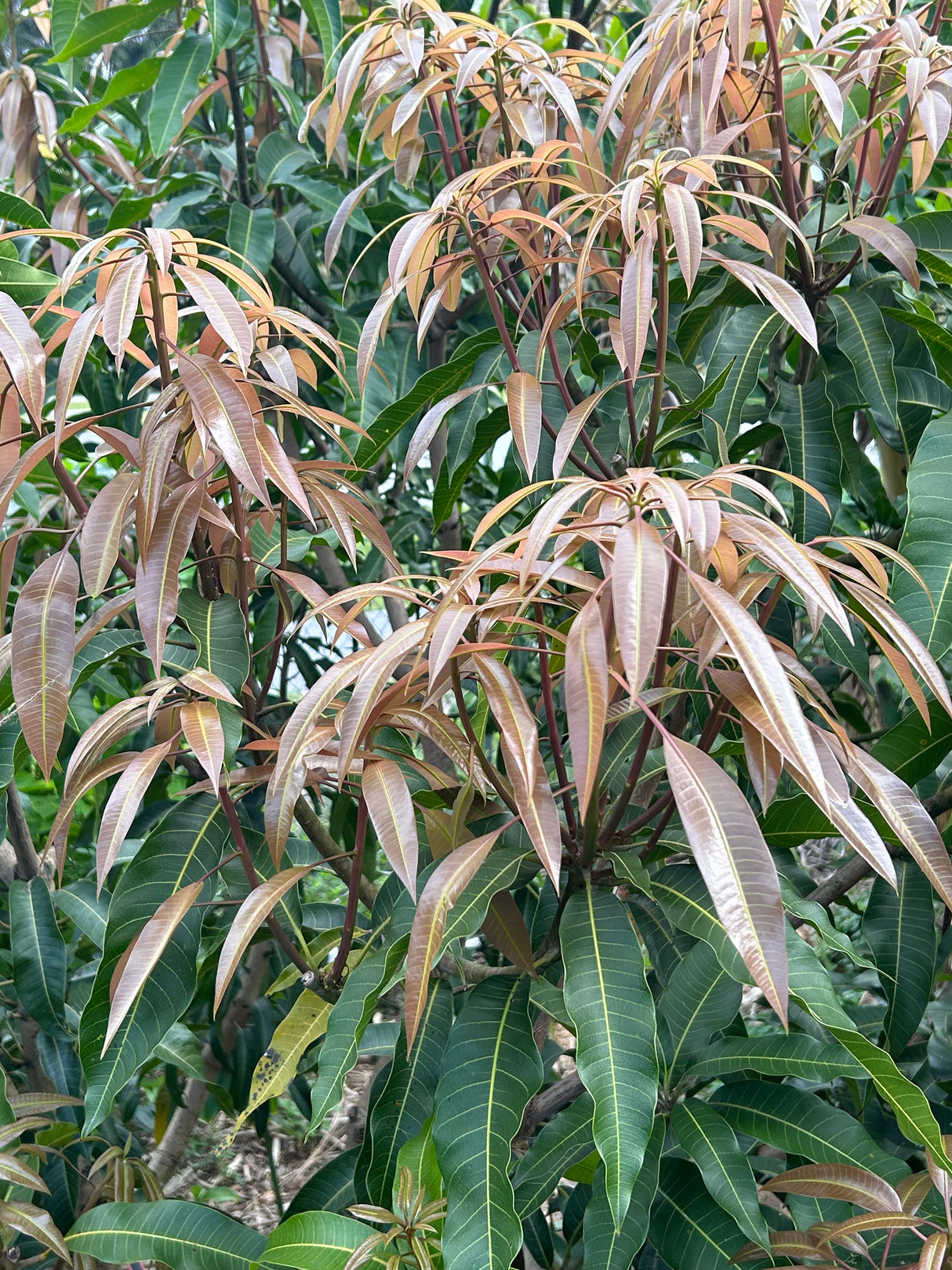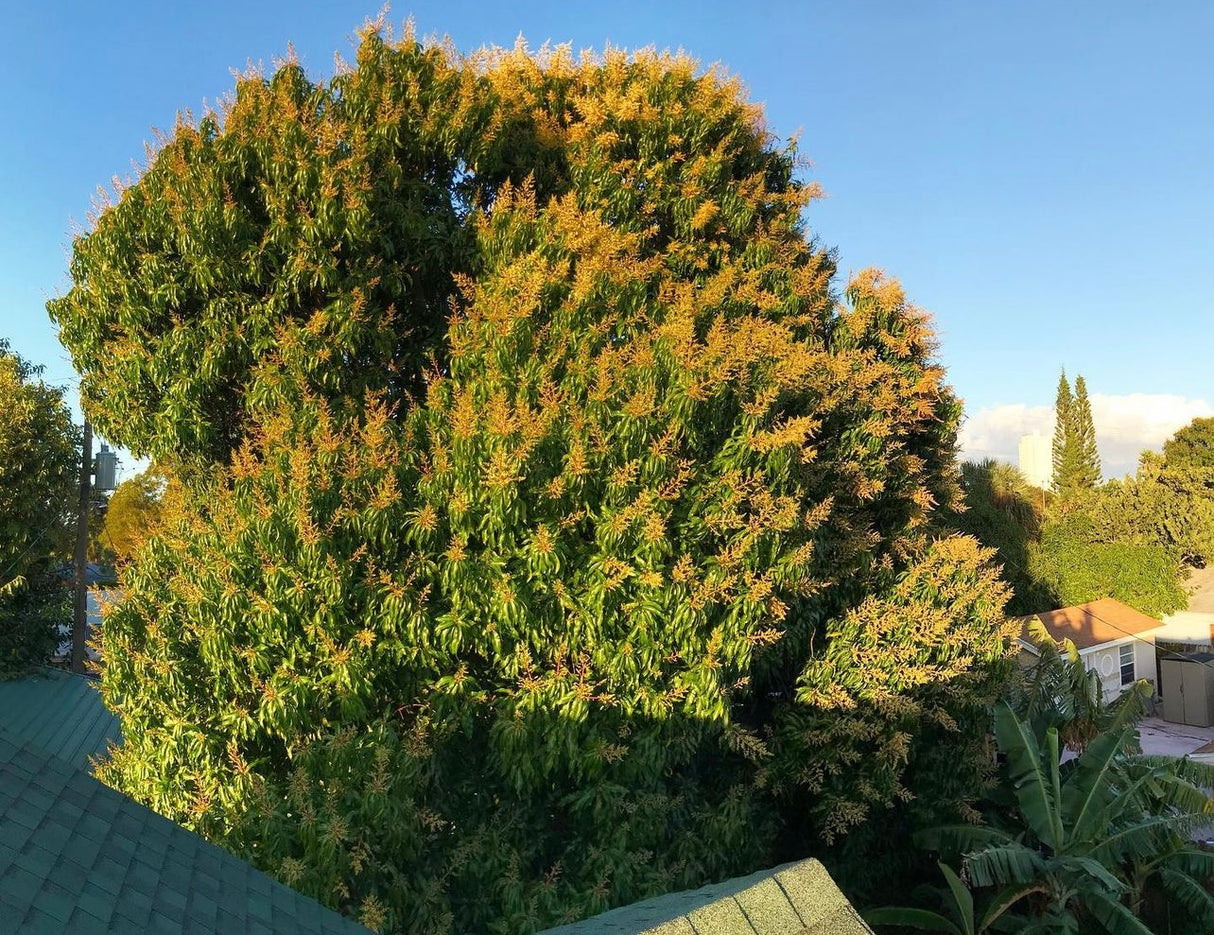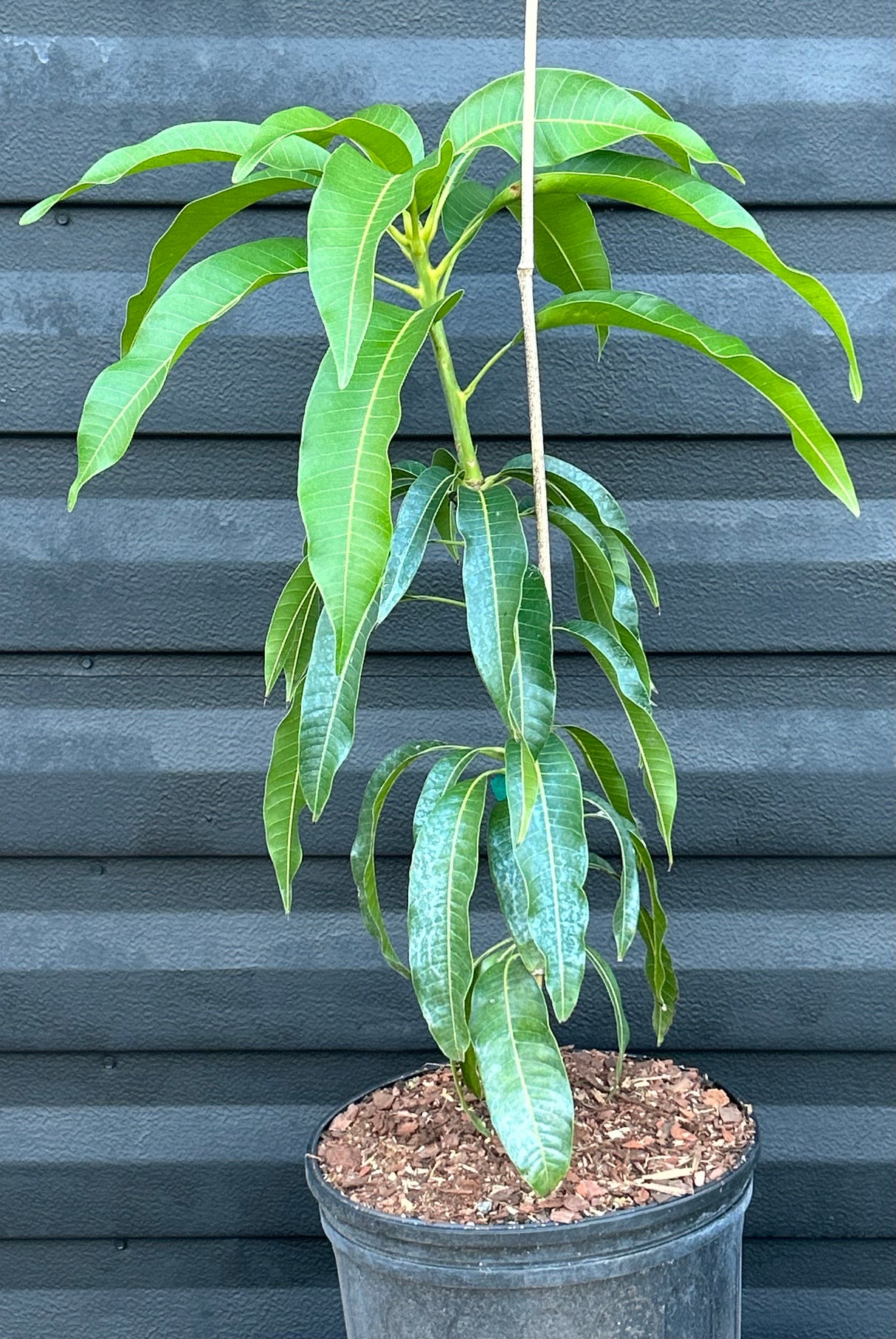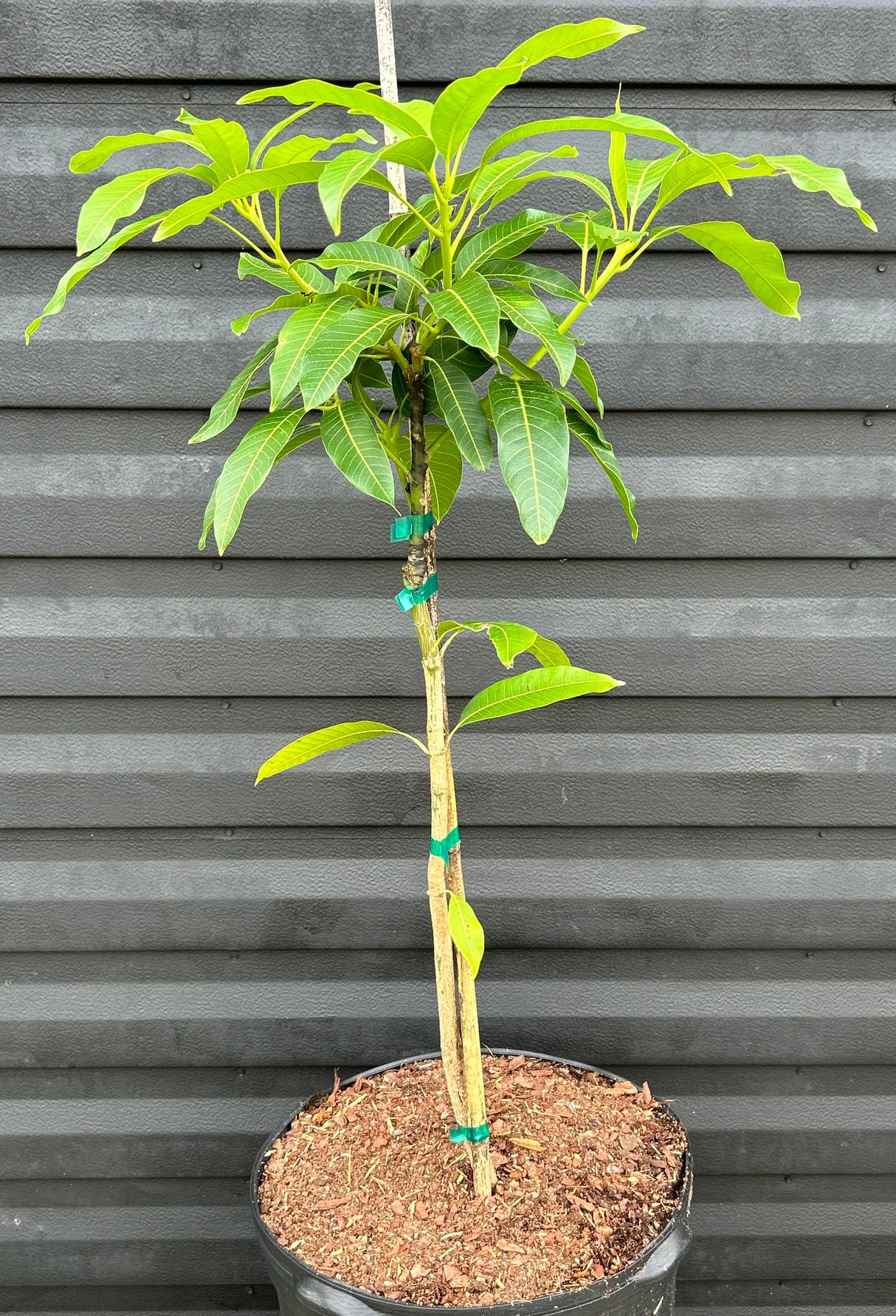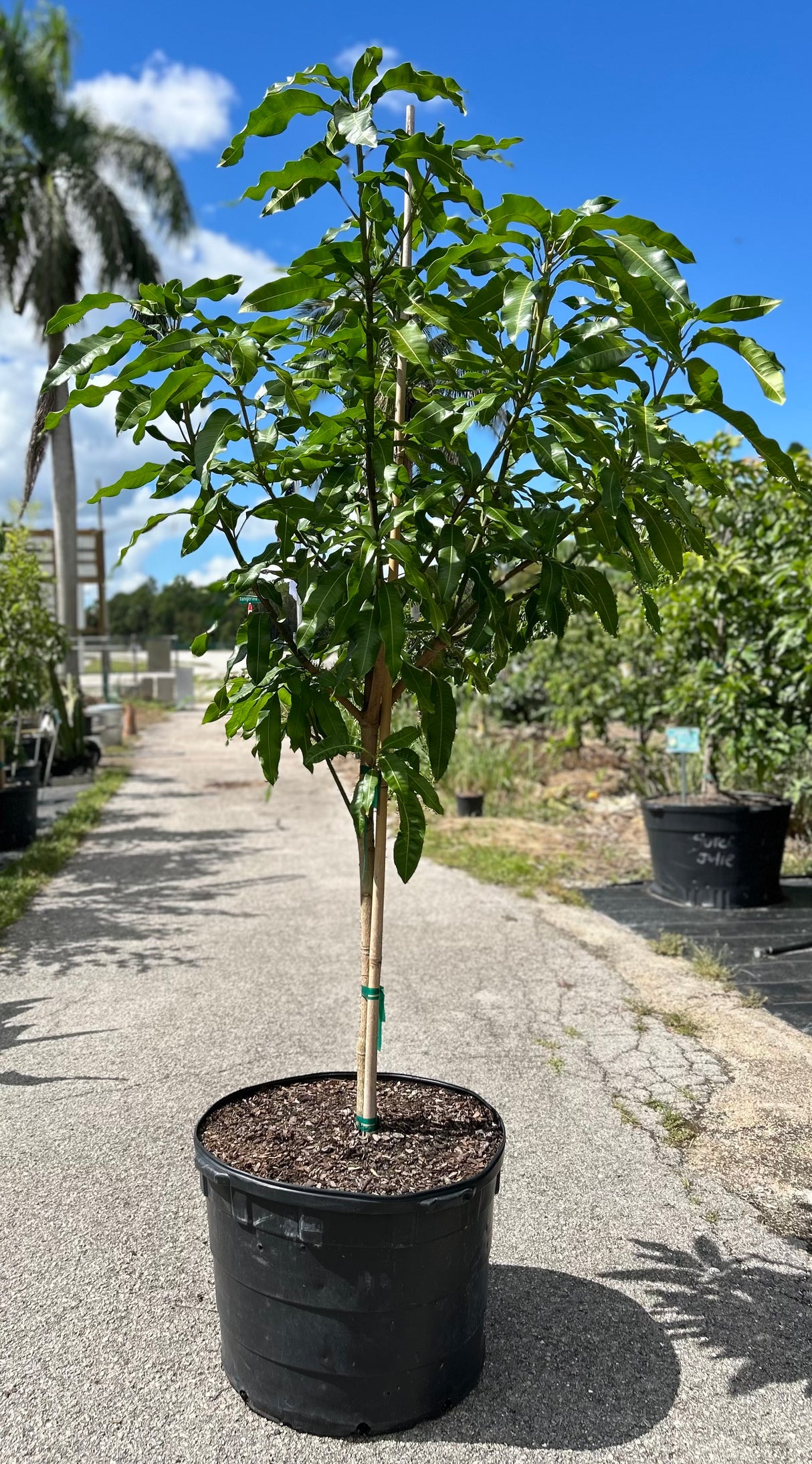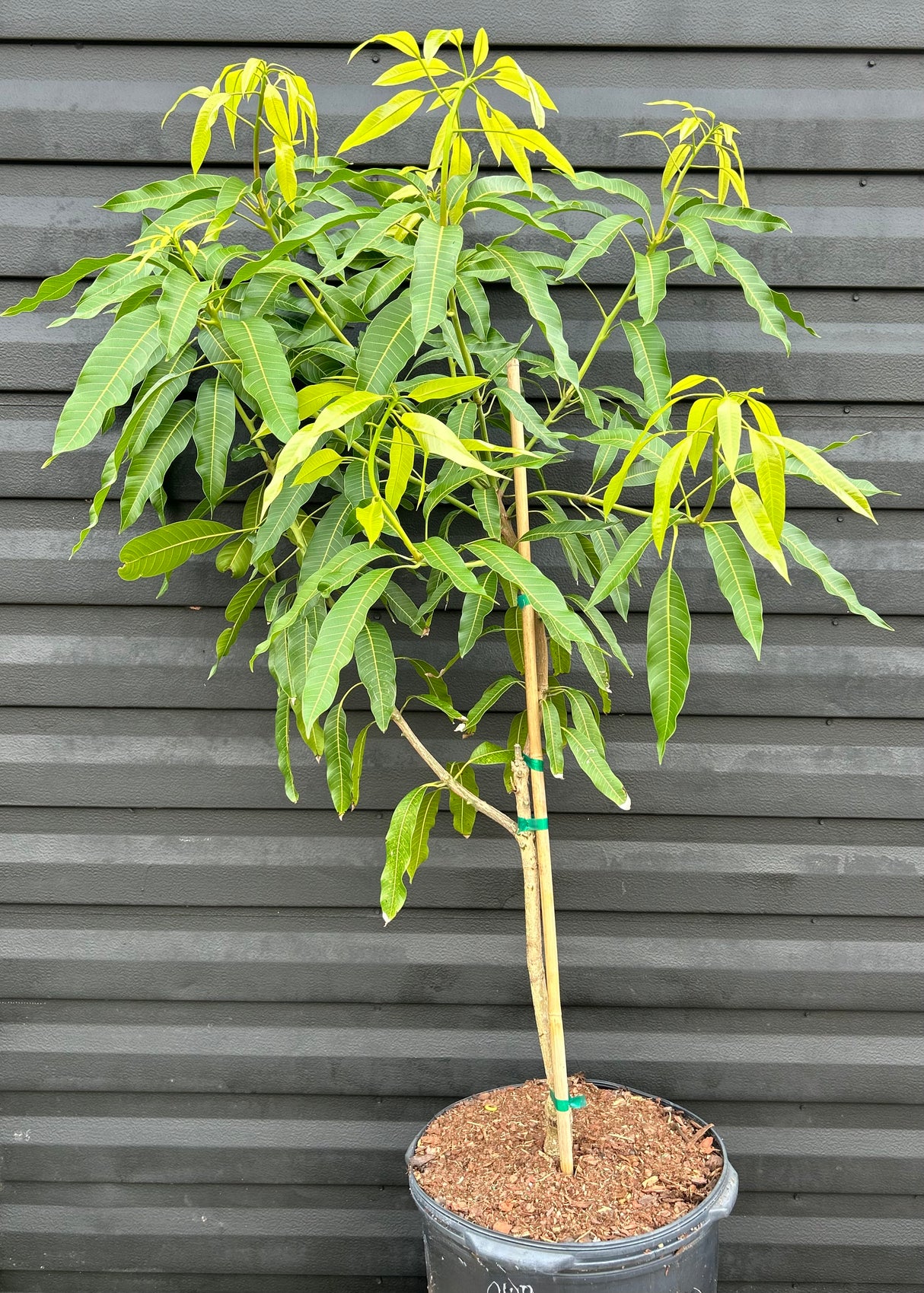Mango Tree ‘Edward’
Mango Tree ‘Edward’ - 3 Gallon is backordered and will ship as soon as it is back in stock.
Fruit Tree Pot Size Reference Guide
Fruit Tree Pot Size Reference Guide
Display general product information or specific product information using metafields.
We sell grafted fruit trees in various sizes, ranging from young 3-gallon plants all the way up to 25-gallon and larger, mature trees.
As a general rule of thumb, here’s what you can expect from each size:
3 gallon: Will take an average of 2-3 years before harvesting your first crop. Trees are small and may be just a single stem, or just starting to develop their first branches. Typical height is between 2-4 feet.
7 gallon: Will take an average of 1–2 years to produce a crop. Branching structure has started to develop, and trunks are between ½ to 1 inch thick. Typical height is between 3-6 feet.
15 gallon: You can usually expect fruit within a year of planting, and some trees are already fruiting at this size. Branch and canopy structure has taken shape and the tree is starting to grow wider. Trunks are between 1 to 1-½ inches thick. Typical height is 5-8 feet.
25 gallon and larger: These are mature trees, and most are ready to produce fruit or have already produced. They have been pruned and shaped multiple times at this point. Trunks are about 2” thick or larger. Typical height is 6-10 ft.
PLEASE NOTE: These descriptions are generalized - Some species of fruit trees are very quick to produce, and others take longer. For example, mulberry trees can start fruiting at a very young age, even as small as a 3 gallon. Mango, avocado, or sapodilla trees will take longer. Each species grows at a different rate and will take varying lengths of time to establish, and even different cultivars can be more precocious (quick to produce) than others.
Order Pick Up/Delivery Info
Order Pick Up/Delivery Info
When you select the “Nursery Pickup” option at checkout, please allow up to 24-48 hours for your order to be prepared for pickup. Once your order is ready for pickup, we will email you to let you know that it is ready. Plant orders may be held at the nursery for up to 10 days. If orders are not picked up within this time frame, a 15% restocking fee will be charged. If you are unable to pick up your order, please contact us to request a quote for delivery.
If you prefer to have us deliver your plants, select "Ship" at checkout and choose the "Local Delivery" option. (This option will not be visible if your order is below the $300 minimum for delivery). Delivery cost for orders within 20 miles is a flat rate of $50. If your address is further than 20 miles, we will invoice you for the additional mileage at $3/mile upon fulfilling your order. Deliveries are typically scheduled on Tuesdays and Wednesdays. Please include your phone number and any delivery instructions in the order notes.
Responsibility of Care
Responsibility of Care
Return Policy
Return Policy
All sales are final at the time of payment. Please be sure that you are happy with your order before submitting. Returns or exchanges will only be made under exceptional circumstances, at our discretion, and are subject to a 15% restocking fee. Once plants have left the nursery and are no longer in our care, they cannot be returned.
Inventory Disclaimer
Inventory Disclaimer
Every day, we take great care to maintain our inventory and make real-time updates as plants come and go. Because our inventory is constantly changing, and because in-store and online purchases are being made simultaneously, it is possible for a short window to occur when an item is physically sold out, but listed as in-stock on this platform. This is rare, but in the case that it does happen, we will contact you right away and either refund the item or offer an alternative. Thank you for your understanding!
Additionally, we add new plants to the nursery on a weekly, sometimes daily basis. Check back often to see what’s in stock, and click the “Notify me when this item is available” button to get updates when your wish-list items are restocked!
Description
Description
Early Season / Classic Flavor / Origin: Florida
To rate ‘Edward’ as a good mango would be an understatement– it is one of our all-time favorite fruits, and has a special place in our garden since this is the tree that first introduced us to high quality mangos in 2017. It is named for Edward Simmonds, who led the USDA’s plant introduction program in Miami in the early 1900’s. Simmonds’ goal was to breed superior mango varieties, by cross-pollination of the various cultivars available in Florida at the time. After his passing in the 1930s, a tree on his property was found to have outstanding quality fruit, with a very early ripening season. By the 1940s, propagation of the ‘Edward’ mango began, and it quickly became known as one of the best mangos in Florida, keeping that title to the present day.
Edward trees usually bloom very early in the season, sometimes as early as October but always in full bloom by early January. This leads to multiple crops, with the first ripe fruit appearing by mid-April, extending all the way to July. The fruit is medium-large, yellow when ripe, with a beautiful orange and red blush. It has fiberless, firm flesh, with an attractive sweet aroma and a well balanced classic mango flavor. Edward is richly sweet with just enough acidity to balance its flavor, and at times there is a slight coconut note. The tree is moderately vigorous, and grows large with a dense canopy.
When we purchased our previous property in 2017, there was a large old mango tree covering about a third of the backyard. This turned out to be one of the original Edward trees planted in West Palm Beach, and we were thrilled to discover this when it fruited that spring. Since then, we have always favored this mango and look forward to it being the first fruit we pick each mango season.
____________________________________________________________________________________________
Latin name - Mangifera indica
The undisputed King of Fruits! Mangos are widely celebrated around the world, and for us, Mango season is truly the most wonderful time of year. Originating in Northeast India, Mango trees have been in cultivation for thousands of years, spreading to every part of the world where the climate is suitable to grow them. Through many generations of cultivation and careful selection, a huge diversity of Mango varieties has been developed, leading to possibly the widest spectrum of flavors of any fruit in existence.
We grow over 60 Mango varieties and counting– see below for our full list of cultivars. Some have a mild and sweet flavor, reminiscent of peaches. Others have more citrusy or floral notes. Some Mangos have strong, intense flavors often described as “resinous”, and still others are highly aromatic with notes of clove or cardamom. A Mango cultivar may be named for the grower who originally developed it, for the visual appearance of the fruit, or simply to describe the flavor.
In addition to the depth of flavor and aroma, each Mango cultivar has its own set of characteristics, including growth rate, canopy shape, fruiting season, productivity, and the appearance and size of the fruit. All Mango trees thrive in full, unobstructed sunlight, and require ample space to grow. At maturity, they can reach heights of 30-50 feet, but through strategic pruning and variety selection, it’s possible to maintain a Mango tree at 12-15 feet or even smaller with some effort. Mangos thrive in South Florida’s sandy soil, and can tolerate dry periods like a champ. Occasionally it may be necessary to supplement trace minerals like Zinc or Calcium to improve fruit set and quality, but for the most part, Mango trees require very little care.
_____________________________________________________________________________
Size: Can grow 30+ ft tall, but possible to manage at 12-15 ft with pruning.
Sun Requirements: Full sun
Cold Hardy: 32 degrees
Harvest Season: Spring/Summer
Watering requirements: Tolerates drought well, will benefit from additional watering.
Food Forest Layer: Canopy

